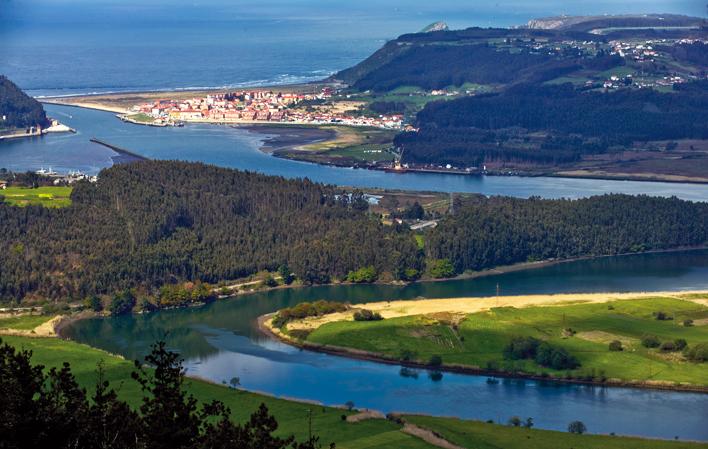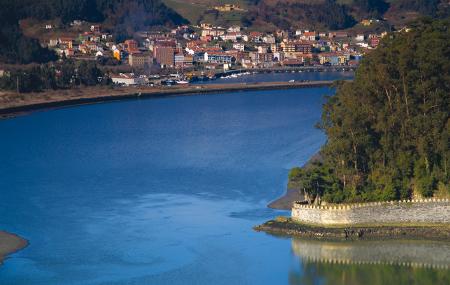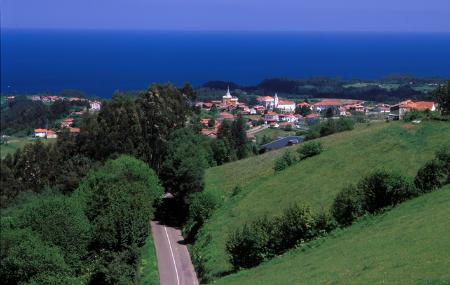
- Address Pravia, Soto del Barco, Muros del Nalón Central Asturias
- Distance Distance: 13 kms
- Cars Cars: 2 days
- Start point Start point: Pravia
- Route type Route type: coche
- Layout of the route Layout of the route: Download kml
The mouth of the River Nalón, the longest and fastest flowing river in Asturias, is both a link and a natural border between Pravia, Soto del Barco and Muros de Nalón.
The mouth of the River Nalón, the longest and fastest flowing river in Asturias, is both a nexus and a natural border between Pravia, Soto del Barco and Muros de Nalón, three boroughs that form a territory known as Bajo Nalón. It is a land of fishermen, of Indianos, whose success in the Americas remains reflected in the ostentation of their villas, and of farmers.
Pravia, Soto del Barco - Muros del Nalón
Day 1: Pravia - L' Arena 16,7
The trip into the territory begins in Pravia, the most populous town in the lower reaches of the River Nalón, whose historic quarter is a listed Site of Cultural Interest. This site is divided into two different areas which travellers can explore on foot: the one surrounding the Collegiate Church, including Moutas Mansion, the square and the canons' houses. and that around the town hall, which is the oldest section, including the town hall itself and some palatial homes. Outside Pravia, the next stop is the village of Santianes to visit an 8th-century Pre-Romanesque church and its museum. The traveller can get there quickly and comfortably in the car on the AS-224, or enjoy a very scenic walk, which starts out from Salcedo industrial estate, situated at the entrance to Pravia from the AS-16. The flat trail is 8 kilometres long (round-trip) and runs parallel to the river.
In the afternoon, you can continue on towards the sea, with a stop in Sotu, an urban area consisting of single family homes. The Clarín Theatre, the town hall and the La Magdalena site, a collection of Indiano villas scattered along a stretch of the N-632, are perfect tourist attractions. The end of the day will feature L' Arena, just four kilometres from Sotu. This fishing harbour, which once had baby eels as one of its basic commodities, retains the original wholesale fish market dating from the early 20th century. On the edge of the village, Los Quebrantos Beach is ideal for surfing due to its powerful waves.
Day 2: L' Arena - San Esteban 11,5
Somao, west of Soto del Barco on the N-632, is the first destination on the second day. It is distinguished by the high density of Indiano -style buildings, the best known of which is La Torre House, in addition to the Opera Omnia art gallery and its hórreos and paneras, two kinds of raised granaries-cum-storehouses, which are privately owned. Just a kilometre and a half away is Muros de Nalón, where travellers can admire the façade of the town hall, the cultural centre, the parish church, the Marquis of Valdecarzana Mansion.
The final section of the trip is an excursion along the spectacular trail of scenic balconies that starts out from El Aguilar Beach and runs along the coastal strip to end in the salt-water pools in San Esteban, offering panoramic views of the mouth of the River Nalón. The path, which is 5 kilometres long (each way), is not at all difficult, but is not suitable for pushchairs as there are steps on some stretches.



